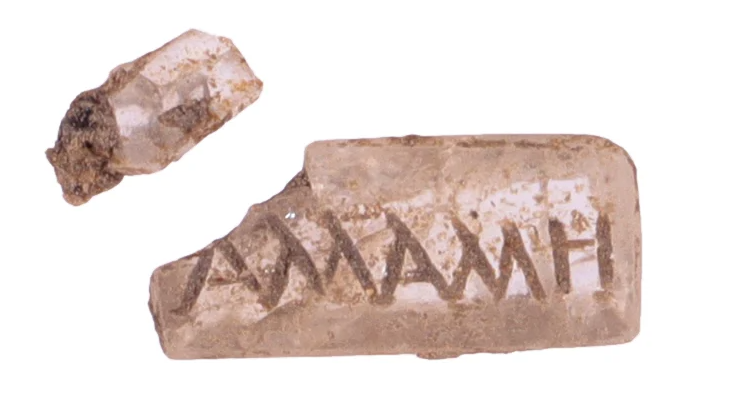2,000-year-old gold ring holds clue about lavish cremation burial unearthed in France
A lavish cremation tomb found in France may point to funeral rites for an adolescent boy.

Archaeologists in France have discovered a Roman-period cremation tomb richly furnished with silver coins, gold jewelry, and a ring inscribed with what is likely the last name of the deceased.
The grave was found unexpectedly during excavations at a medieval settlement in Lamonzie-Saint-Martin, a small town in southwestern France. As the archaeologists excavated underneath the medieval silos, they noticed an unusual burial, according to a Nov. 24 translated statement from the French National Institute for Preventive Archaeological Research (INRAP).
Excavation of the burial revealed it to be a "bustum," a type of Roman-era funeral practice in which the deceased was cremated directly over the grave and then immediately buried. The rectangular bustum measured 7.2 by 3.4 feet (2.2 by 1.05 meters) and was filled with grave goods for the deceased.
In one corner of the burial, archaeologists found a ceramic beaker and a clear glass vial. In another cluster of offerings, archaeologists recovered 10 silver and bronze coins, alongside small gold sheets that may have decorated a purse or case that held the coins. A series of lozenge-shaped crystals was also discovered, likely the remains of a bejeweled leather accessory that has since decomposed, as well as a long, corroded iron object that may have been part of a horse bit, which would have attached to a bridle.
The burial style, pottery and coins suggest that the bustum dates to sometime between the first and third centuries.
Also recovered from the burial were nearly two dozen gold objects, two of which may hold clues to the occupant of the grave.

Archaeologists unearthed a probable "bulla" — a special amulet that was given to male children in ancient Rome nine days after they were born and that they wore until they came of age as Roman citizens at around 16 years old. And the remains of a gold ring, deformed by the heat of the cremation, appear to match up with a small piece of inscribed rock crystal called an intaglio. The Greek inscription on the intaglio reads ΑΛΛΑΛΛΗ (Allallé), which may be the surname of the deceased.
Get the world’s most fascinating discoveries delivered straight to your inbox.
The rich and well-preserved cremation tomb has raised a number of questions that archaeologists will try to answer through further analysis. They will study the surviving human bones to try to determine the deceased's sex and age at death. They will also excavate in the area to look for other graves or dwellings that could help them understand why this tomb full of artifacts, including one that suggests Greek heritage, was placed in this part of France.
Roman emperor quiz: Test your knowledge on the rulers of the ancient empire

Kristina Killgrove is a staff writer at Live Science with a focus on archaeology and paleoanthropology news. Her articles have also appeared in venues such as Forbes, Smithsonian, and Mental Floss. Kristina holds a Ph.D. in biological anthropology and an M.A. in classical archaeology from the University of North Carolina, as well as a B.A. in Latin from the University of Virginia, and she was formerly a university professor and researcher. She has received awards from the Society for American Archaeology and the American Anthropological Association for her science writing.
You must confirm your public display name before commenting
Please logout and then login again, you will then be prompted to enter your display name.
